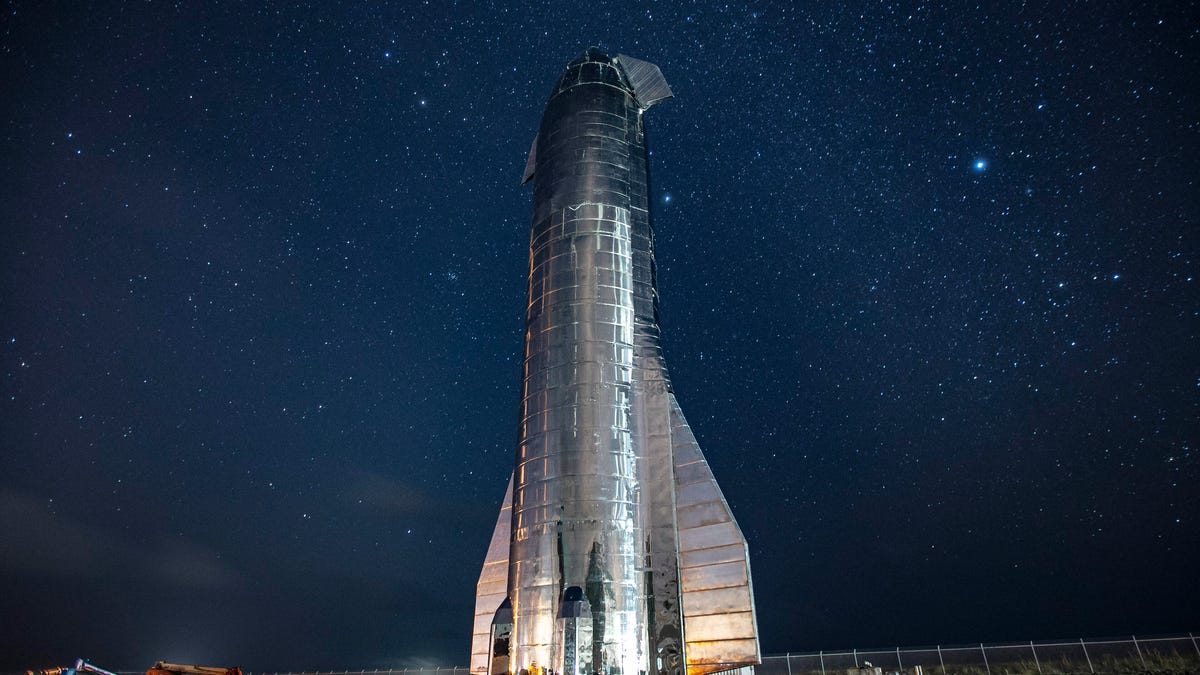NASA picks SpaceX, Blue Origin, Dynetics to land humans on the moon
SpaceX's Starship is one of three landing systems NASA could use to put humans on the moon as part of its Artemis program.
NASA doesn't just want to pop by the moon for a one-time visit in 2024. It wants to go there again and again, creating a sustainable human presence at our lunar neighbor through the Artemis program. Three companies -- Blue Origin , Dynetics and SpaceX -- have signed on to help turn this vision into reality by developing moon landers.
NASA announced on Thursday it selected the three space companies for $967 million worth of contracts to design human landing systems, "one of which will land the first woman and next man on the surface of the moon by 2024."
"This is the first time since the Apollo era that NASA has direct funding for a human landing system, and now we have companies on contract to do the work for the Artemis program," NASA adminstrator Jim Bridenstine said in a statement.
Check out some concept videos and art for these landers below. There are considerable differences between the designs:
A self-imposed 2024 deadline for returning humans to the moon makes for a tight schedule. NASA hopes to move quickly with the lander developments. The companies will refine their concepts through February 2021. "During that time, the agency will evaluate which of the contractors will perform initial demonstration missions," NASA said.
The Blue Origin Integrated Lander Vehicle (ILV) is one of three moon landers in development for NASA.
Blue Origin, founded by Amazon 's Jeff Bezos , is working on its Integrated Lander Vehicle (ILV) in partnership with aerospace and engineering companies Lockheed Martin, Northrup Grumman and Draper. "The Blue Origin National Team's elements for the Human Landing System can be launched individually on commercial rockets or combined to launch on NASA's Space Launch System," NASA said.
NASA's Space Launch System (SLS) has hit some development delays, but the rocket is intended to transport astronauts riding inside the space agency's Orion crew capsule. A moon lander that can take astronauts on the final leg of the journey to the lunar surface is the missing component the new contracts are meant to provide.
Dynetics' human lander concept would make it simple to access the moon's surface after landing.
Alabama-based Dynetics has the least name recognition, but it has already been working with NASA on the SLS project. The Dynetics Human Landing System is designed to dock with NASA's Orion capsule, and to make moon exploration relatively easy. "The crew cabin sits low to the surface, enabling a short climb for astronauts entering, exiting, or transporting tools and samples," said NASA.
This concept illustration shows a SpaceX Starship on the moon.
SpaceX's Starship is currently under development and rapidly moving toward flight tests. A lunar version of Starship would launch on a SpaceX Super Heavy rocket.
After the NASA announcement, SpaceX talked up Starship's potential as an astronaut ferry to the moon. "A lunar optimized Starship can fly many times between the surface of the Moon and lunar orbit without flaps or heat shielding required for Earth return," SpaceX tweeted.
A lunar optimized Starship can fly many times between the surface of the Moon and lunar orbit without flaps or heat shielding required for Earth return pic.twitter.com/Zpkldayy85
— SpaceX (@SpaceX) April 30, 2020
SpaceX founder Elon Musk tweeted a congratulations to his company, saying, "Great work by SpaceX team and very much appreciate faith in Starship by NASA."
NASA's grand vision for a sustained human presence at the moon involves the building of a Gateway, a small spaceship that will orbit the moon and act as a link between Earth and the lunar surface. SpaceX already signed on as a commercial provider to carry cargo to the Gateway.
The adoption of commercial lunar services follows in the pattern of NASA's Commercial Crew Program, which is working with SpaceX and Boeing to launch astronauts from US soil to the International Space Station.
The choice of three providers for lunar landers should spark some friendly competition as NASA moves toward choosing the lander that will carry the first humans to touch down on the moon's surface since 1972. The ambitious 2024 date means Blue Origin, Dynetics and SpaceX will have to move fast to keep Artemis on schedule.


